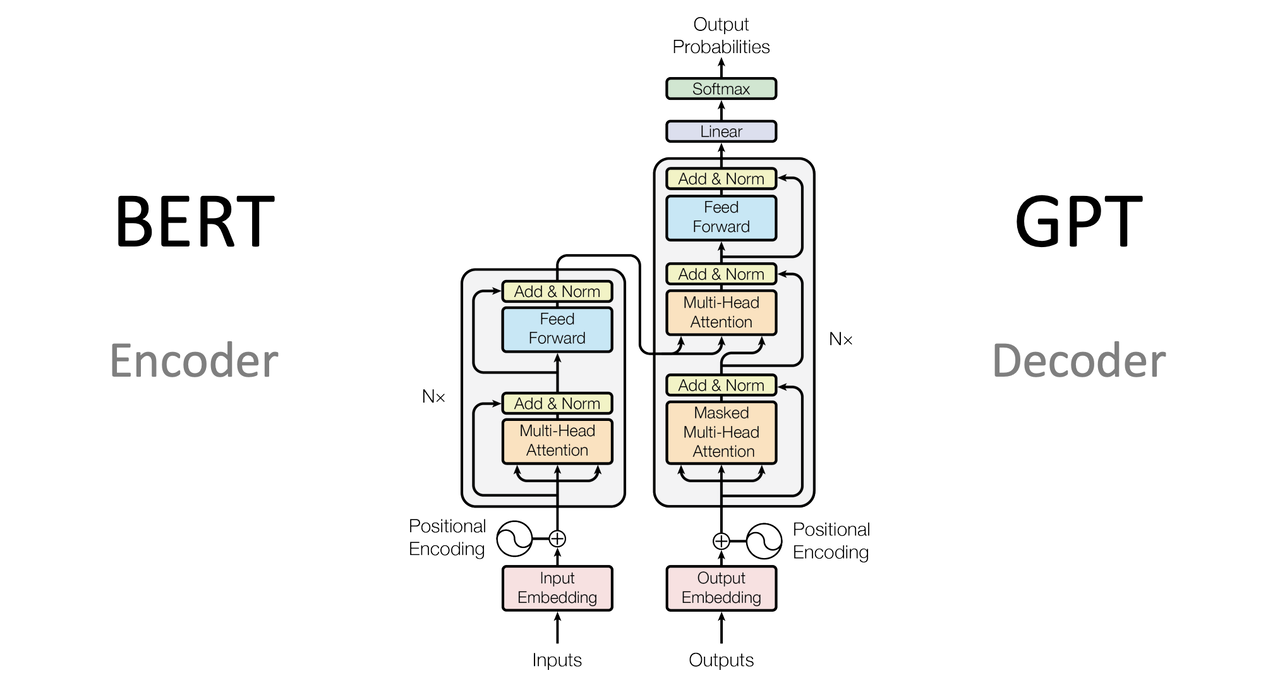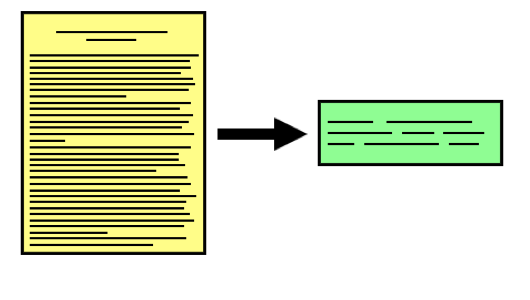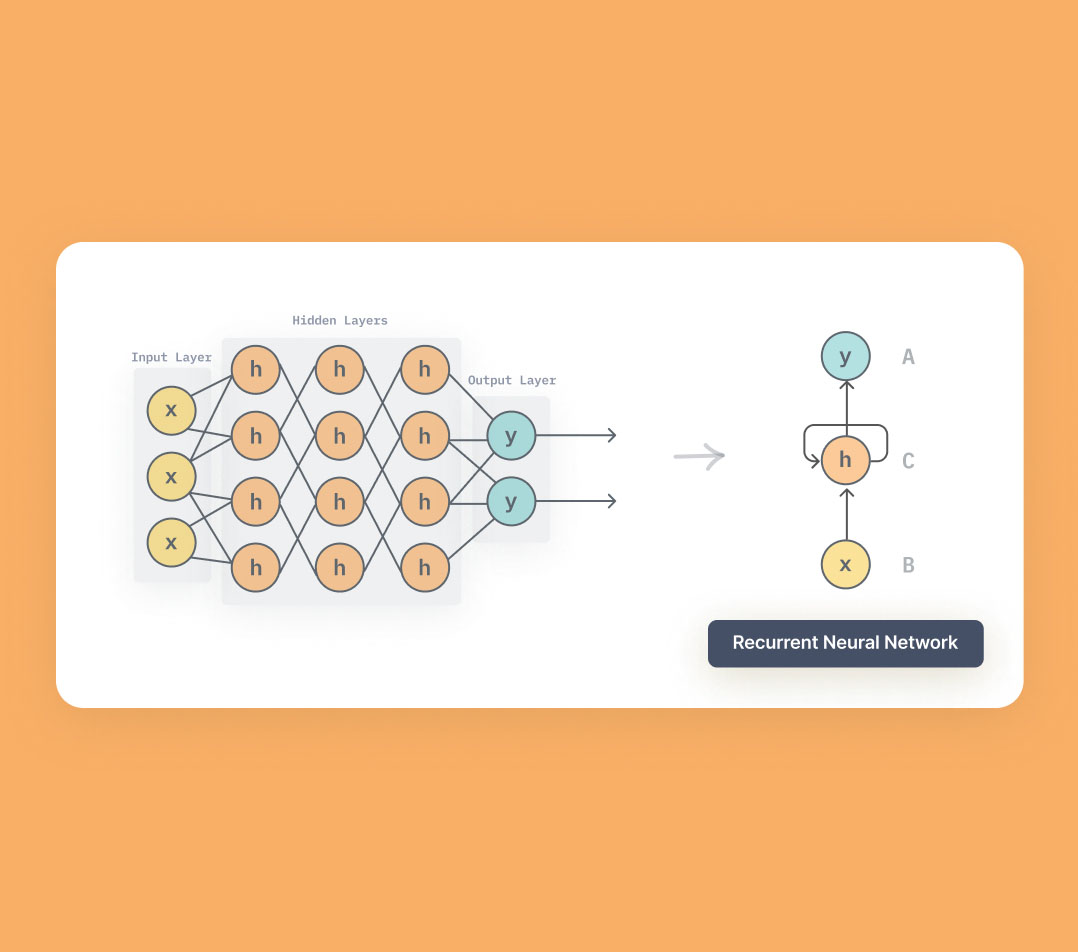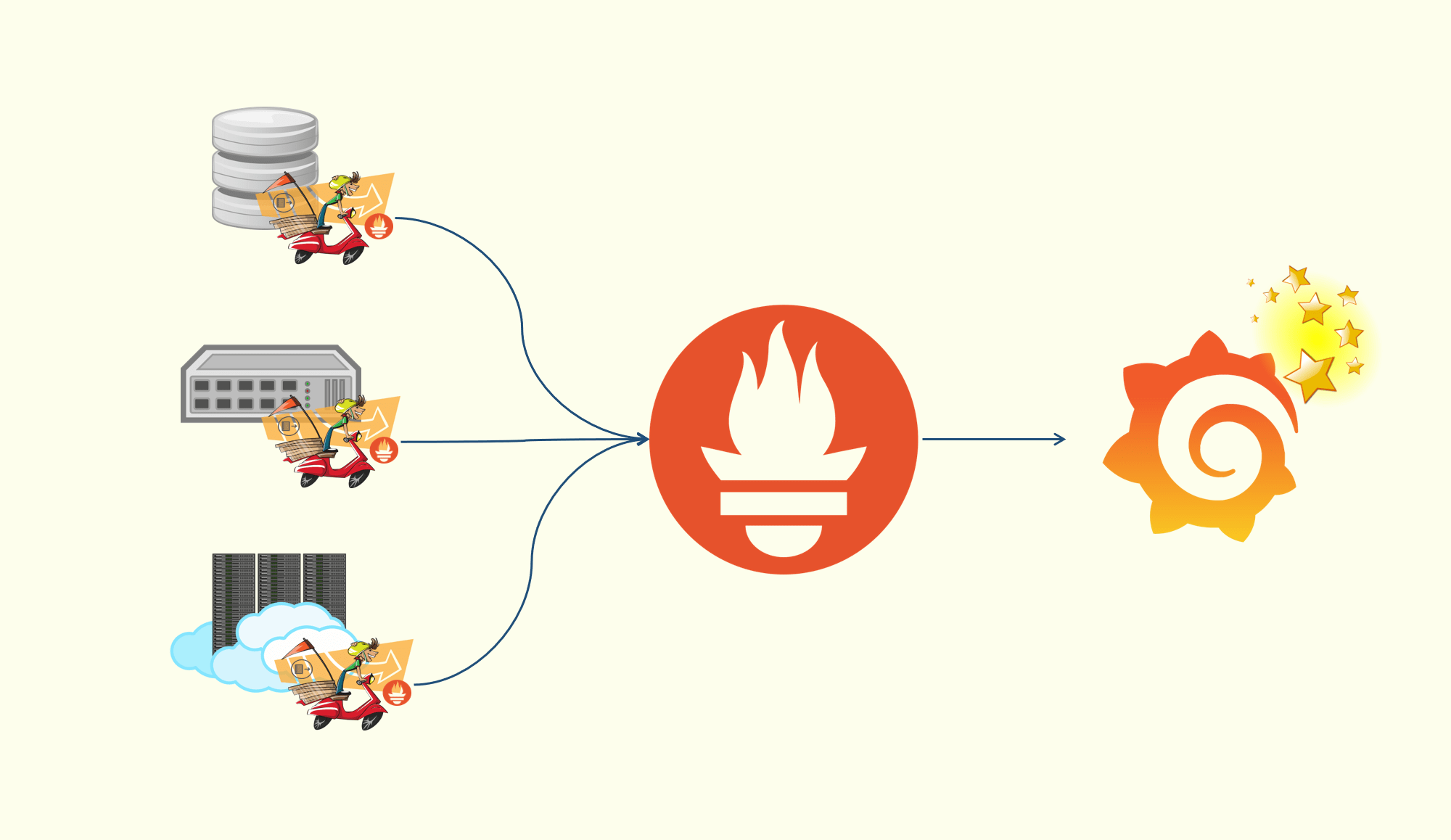基础
NLP 的研究目的是让计算机能够理解、解释和生成人类语言,一般包含 4 个步骤
| Step |
Desc |
| 文本预处理 |
将原始文本转换成机器容易理解的格式
分词(单词或短语)、去除停用词、词干提取、词性标注等 |
| 特征提取 |
从处理过的文本中提取特征,以便用于机器学习模型
将文本转换成数值形式 - 向量化 - 词袋模型 or 词嵌入 |
| 模型训练 |
使用提取到的特征和相应的机器学习算法来训练模型
分类器、回归模型、聚类算法等 |
| 评估与应用 |
评估模型的性能,并在实际应用中使用模型来解释、生成或翻译文本 |
应用场景 - 搜索引擎 / 语音转换 / 文本翻译 / 系统问答
ML vs NLP
| Scope |
Desc |
| ML |
让计算机通过查看大量的例子来学习如何完成任务 |
| NLP |
教会计算机理解和使用人类语言 |
| ML + NLP |
用机器学习的技术来让计算机学习如何处理和理解语言 |
文本预处理
将原始文本转换成易于机器理解和处理的格式
文本清洗
去除噪音(对分析无关紧要的部分)及标准化文本
1
2
3
4
5
6
7
8
9
10
11
12
13
14
15
16
17
18
| import re
def remove_noise(text):
text = re.sub(r'<.*?>', '', text)
text = re.sub(r'[^\w\s]', '', text)
return text
text = "<p>Hello, World! Here's a <a href='https://example.com'>link</a>.</p>"
clean_text = remove_noise(text)
print(clean_text)
tokens_normalized = [token.lower() for token in clean_text]
print(tokens_normalized)
|
输出
1
2
| Hello World Heres a link
['h', 'e', 'l', 'l', 'o', ' ', 'w', 'o', 'r', 'l', 'd', ' ', 'h', 'e', 'r', 'e', 's', ' ', 'a', ' ', 'l', 'i', 'n', 'k']
|
分词
将文本分解成词汇、句子等
1
2
3
4
5
| from nltk.tokenize import word_tokenize
text = "Natural language processing (NLP) is a field of computer science."
tokens = word_tokenize(text)
print(tokens)
|
输出
1
| ['Natural', 'language', 'processing', '(', 'NLP', ')', 'is', 'a', 'field', 'of', 'computer', 'science', '.']
|
去除停用词
停用词 - 文本中频繁出现但对分析意义不大的词,如 is 和 and 等
去除停用词 - 提高处理效率和分析效果 + 使得数据集变小
1
2
3
4
5
6
7
8
9
10
11
12
13
14
15
16
17
18
19
20
21
22
23
24
25
26
27
28
| import nltk
from nltk.corpus import stopwords
import re
def remove_noise(text):
text = re.sub(r'<.*?>', '', text)
text = re.sub(r'[^\w\s]', '', text)
return text
stop_words = set(stopwords.words('english'))
print(stop_words)
text = "<p>Hello, World! Here's a <a href='https://example.com'>link</a>.</p>"
clean_text = remove_noise(text)
print(clean_text)
tokens_normalized = [token.lower() for token in clean_text]
print(tokens_normalized)
filtered_tokens = [word for word in tokens_normalized if word not in stop_words]
print(filtered_tokens)
|
词干提取
- 去除单词的词缀(前缀 or 后缀),以便于找到单词的词干或根形式
- 该过程是启发式的,可能返回的不是真实的单词,而是单词的一个截断形式
- running / runs / runner -> run
- 可以减少词形变化的影响,使相关的单词能够在分析时被归纳为相同的形式
- 简化文本数据 + 提高文本任务的处理性能
1
2
3
4
5
6
7
8
9
10
11
12
13
14
15
16
17
18
19
20
21
| import nltk
from nltk.stem import PorterStemmer
from nltk.tokenize import word_tokenize
nltk.download('punkt')
stemmer = PorterStemmer()
text = "The leaves on the trees are falling quickly in the autumn season."
tokens = word_tokenize(text)
stemmed_tokens = [stemmer.stem(token) for token in tokens]
print("原始文本:")
print(tokens)
print("\n词干提取后:")
print(stemmed_tokens)
|
输出
1
2
3
4
5
| 原始文本:
['The', 'leaves', 'on', 'the', 'trees', 'are', 'falling', 'quickly', 'in', 'the', 'autumn', 'season', '.']
词干提取后:
['the', 'leav', 'on', 'the', 'tree', 'are', 'fall', 'quickli', 'in', 'the', 'autumn', 'season', '.']
|
词形还原
- 将单词还原到它的词典形式,即词条的基本形式或者词元形式
- 与词干提取相比,词形还原考虑了单词的词性,并尝试更加精确的转换 - 真实单词
- 词性还原能够将单词还原到其标准形式,有助于保持语义的准确性
- 适用于需要精确理解和分析文本意义的场合 - 语义分析
1
2
3
4
5
6
7
8
9
10
11
12
13
14
15
16
17
18
19
20
| from nltk.stem import WordNetLemmatizer
import nltk
from nltk.tokenize import word_tokenize
nltk.download('wordnet')
text = "The leaves on the trees are falling quickly in the autumn season."
tokens = word_tokenize(text)
lemmatizer = WordNetLemmatizer()
lemmatized_tokens = [lemmatizer.lemmatize(token) for token in tokens]
print("原始文本:")
print(tokens)
print("\n词形还原:")
print(lemmatized_tokens)
|
输出
1
2
3
4
5
| 原始文本:
['The', 'leaves', 'on', 'the', 'trees', 'are', 'falling', 'quickly', 'in', 'the', 'autumn', 'season', '.']
词形还原:
['The', 'leaf', 'on', 'the', 'tree', 'are', 'falling', 'quickly', 'in', 'the', 'autumn', 'season', '.']
|
词性标注
- 将文本中的每个单词或符号标注为相应的词性 - 名词/动词/形容词
- 可以揭示单词在句子或语言结构中的作用和意义
命名实体识别
- 识别文本中具有特定意义的实体 - 人名、地点、组织、日期、时间等
- 旨在识别出文本中的实体,并将它们归类为预定义的类别
1
2
3
4
5
6
7
8
9
10
11
12
13
14
15
16
17
18
19
20
| import spacy
nlp = spacy.load("en_core_web_sm")
text = "Apple is looking at buying U.K. startup for $1 billion."
doc = nlp(text)
print("POS Tagging:")
for token in doc:
print((token.text, token.pos_))
print("\nNamed Entity Recognition:")
for ent in doc.ents:
print((ent.text, ent.label_))
|
词性标注
1
2
3
4
5
6
7
8
9
10
11
12
13
| POS Tagging:
('Apple', 'PROPN')
('is', 'AUX')
('looking', 'VERB')
('at', 'ADP')
('buying', 'VERB')
('U.K.', 'PROPN')
('startup', 'NOUN')
('for', 'ADP')
('$', 'SYM')
('1', 'NUM')
('billion', 'NUM')
('.', 'PUNCT')
|
命名实体识别
1
2
3
4
| Named Entity Recognition:
('Apple', 'ORG')
('U.K.', 'GPE')
('$1 billion', 'MONEY')
|
特征提取
从原始文本中挑选出主要信息,然后用计算机能理解的方式进行表达
- 将原始文本转换成可以被机器学习模型理解和处理的数值形式
- 在文本数据中,挑选出反映文本特征的信息,将其转换成一种结构化的数值表示
- 机器学习算法通常无法直接处理原始文本数据,有助于提高模型性能
词袋模型
Bag of Words - BoW
- 忽略文本中单词的顺序,仅关注每个单词出现的次数
- 每个文档被转换成一个长向量
- 向量的长度 = 词汇表中的单词的数量
- 每个单词分配一个固定的索引
- 向量中的每个元素是该单词在文档中出现的次数
1
2
3
4
5
6
7
8
9
10
11
12
13
14
15
16
17
18
19
| from sklearn.feature_extraction.text import CountVectorizer
corpus = [
'Text analysis is fun',
'Text analysis with Python',
'Data Science is fun',
'Python is great for text analysis'
]
vectorizer = CountVectorizer()
X = vectorizer.fit_transform(corpus)
print(vectorizer.get_feature_names_out())
print(X.toarray())
|
词汇表
1
2
| ['analysis' 'data' 'for' 'fun' 'great' 'is' 'python' 'science' 'text'
'with']
|
向量表示
1
2
3
4
| [[1 0 0 1 0 1 0 0 1 0]
[1 0 0 0 0 0 1 0 1 1]
[0 1 0 1 0 1 0 1 0 0]
[1 0 1 0 1 1 1 0 1 0]]
|
词嵌入
Word Embeddings
- 基于词嵌入产生的检索是真是意义的相似
- 将词汇映射到实际向量空间中,同时可以捕获语义关系
1
2
3
4
5
6
7
8
9
10
11
12
13
14
15
16
17
18
19
20
21
22
23
24
| from gensim.models import Word2Vec
from nltk.tokenize import word_tokenize
sentences = [
"The cat sat on the mat.",
"Dogs and cats are enemies.",
"The dog chased the cat."
]
tokenized_sentences = [word_tokenize(sentence.lower()) for sentence in sentences]
print(tokenized_sentences)
model = Word2Vec(sentences=tokenized_sentences, vector_size=100, window=5, min_count=1, workers=4)
cat_vector = model.wv['cat']
print("cat的向量表示:", cat_vector)
similar_words = model.wv.most_similar('cat', topn=5)
print("和cat相似的单词是:", similar_words)
|
通过 gensim 库训练出来一个 Word2Vec 模型,设置 100 维向量 - 单词
1
2
3
4
5
6
7
8
9
10
11
12
13
14
15
16
17
18
19
20
21
22
23
24
25
26
27
| [['the', 'cat', 'sat', 'on', 'the', 'mat', '.'], ['dogs', 'and', 'cats', 'are', 'enemies', '.'], ['the', 'dog', 'chased', 'the', 'cat', '.']]
cat的向量表示: [ 9.4563962e-05 3.0773198e-03 -6.8126451e-03 -1.3754654e-03
7.6685809e-03 7.3464094e-03 -3.6732971e-03 2.6427018e-03
-8.3171297e-03 6.2054861e-03 -4.6373224e-03 -3.1641065e-03
9.3113566e-03 8.7338570e-04 7.4907029e-03 -6.0740625e-03
5.1605068e-03 9.9228229e-03 -8.4573915e-03 -5.1356913e-03
-7.0648370e-03 -4.8626517e-03 -3.7785638e-03 -8.5361991e-03
7.9556061e-03 -4.8439382e-03 8.4236134e-03 5.2625705e-03
-6.5500261e-03 3.9578713e-03 5.4701497e-03 -7.4265362e-03
-7.4057197e-03 -2.4752307e-03 -8.6257253e-03 -1.5815723e-03
-4.0343284e-04 3.2996845e-03 1.4418805e-03 -8.8142155e-04
-5.5940580e-03 1.7303658e-03 -8.9737179e-04 6.7936908e-03
3.9735902e-03 4.5294715e-03 1.4343059e-03 -2.6998555e-03
-4.3668128e-03 -1.0320747e-03 1.4370275e-03 -2.6460087e-03
-7.0737829e-03 -7.8053069e-03 -9.1217868e-03 -5.9351693e-03
-1.8474245e-03 -4.3238713e-03 -6.4606704e-03 -3.7173224e-03
4.2891586e-03 -3.7390434e-03 8.3781751e-03 1.5339935e-03
-7.2423196e-03 9.4337985e-03 7.6312125e-03 5.4932819e-03
-6.8488456e-03 5.8226790e-03 4.0090932e-03 5.1853694e-03
4.2559016e-03 1.9397545e-03 -3.1701624e-03 8.3538452e-03
9.6121803e-03 3.7926030e-03 -2.8369951e-03 7.1275235e-06
1.2188185e-03 -8.4583247e-03 -8.2239453e-03 -2.3101569e-04
1.2372875e-03 -5.7433806e-03 -4.7252737e-03 -7.3460746e-03
8.3286157e-03 1.2129784e-04 -4.5093987e-03 5.7017053e-03
9.1800150e-03 -4.0998720e-03 7.9646818e-03 5.3754342e-03
5.8791232e-03 5.1259040e-04 8.2130842e-03 -7.0190406e-03]
和cat相似的单词是: [('and', 0.19912061095237732), ('on', 0.17272791266441345), ('dog', 0.17018885910511017), ('are', 0.14595399796962738), ('enemies', 0.0640898048877716)]
|
解释
| 方式 |
描述 |
| 数学 |
单词用 100 维向量来表示,是在 100 维空间的表示方式 |
| 语义 |
单词有 100 个属性 |
模型训练
- 丢给计算机包含了大量例子(包含正确答案)的数据集
- 计算机通过数据集尝试学习,一开始会犯很多错误
- 随着不断地尝试和学习,开始识别数据中的模式和规律
- 会用一些计算机没见过的新例子来检测计算机学到了多少
- 在训练过程中,不断调整计算机学习的方式,即算法参数
- 最后,当计算机能够准确快速地解决问题时,说明模型已经训练好了
评估与应用
- 当模型训练好后,需要进行测试与评估
- 评估的目的 - 衡量模型的性能和准确性 - 确保它能够可靠地完成既定任务
- 实现方式 - 将模型的预测结果与实际结果进行比较
- 性能指标(取决于任务的性质) - 准确率、精确率、召回率、F1 分数等
- 如果模型经过评估满足标准,则可以放到实际应用去解决问题
- 在模型部署后,依然需要持续监控其性能
- 确保随着时间的推移和数据变化,模型依然有效
- 必要时,模型需要基于新数据或反馈进行重新训练和更新











